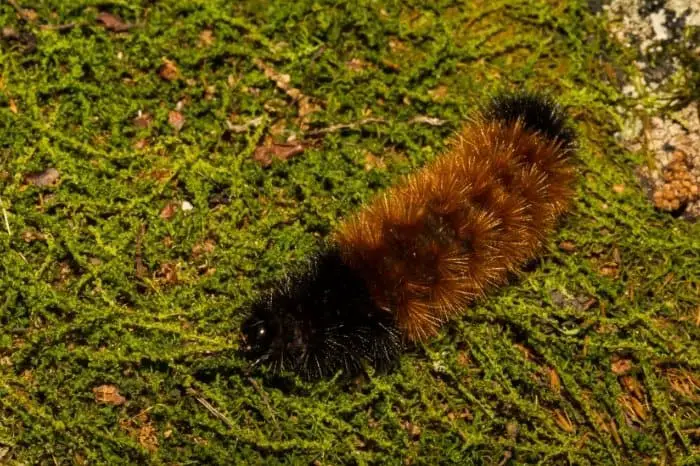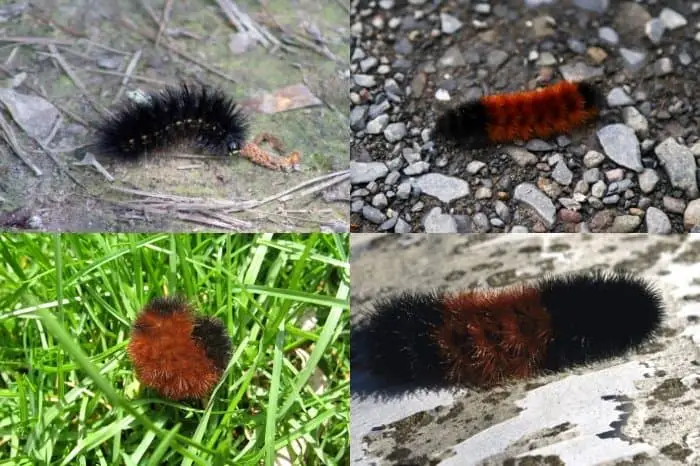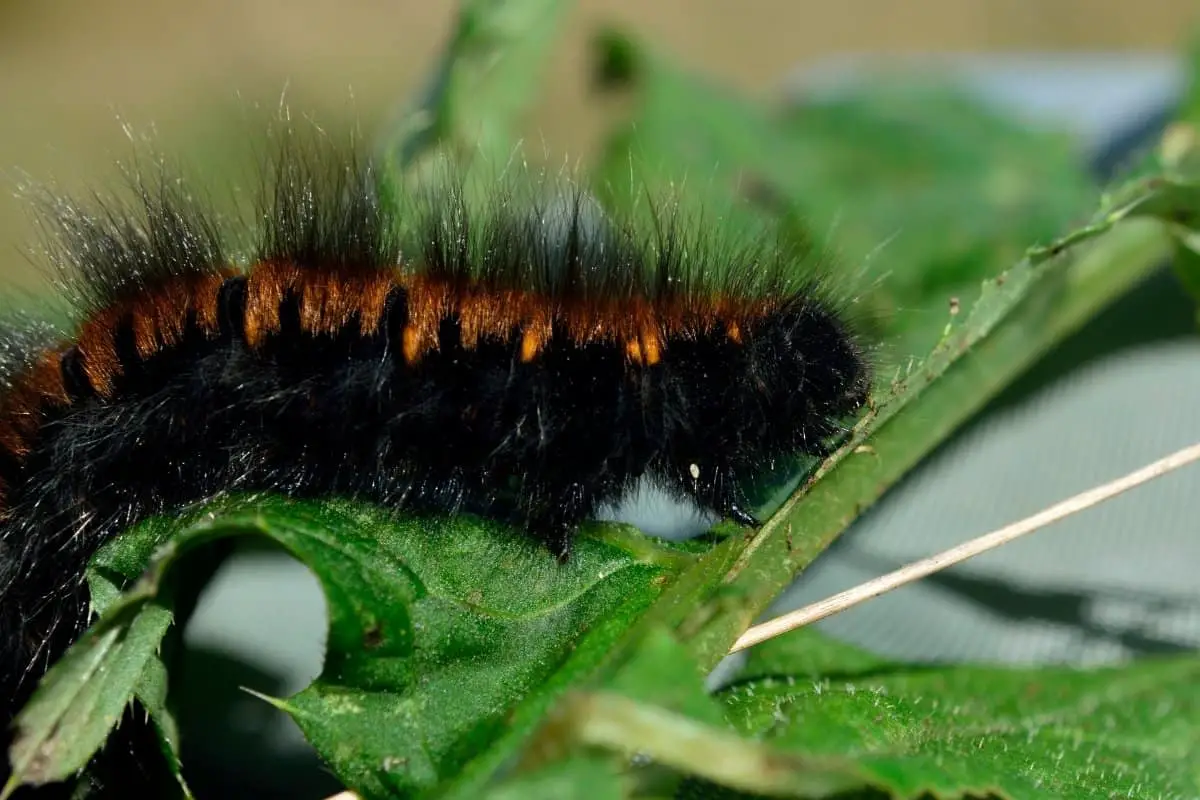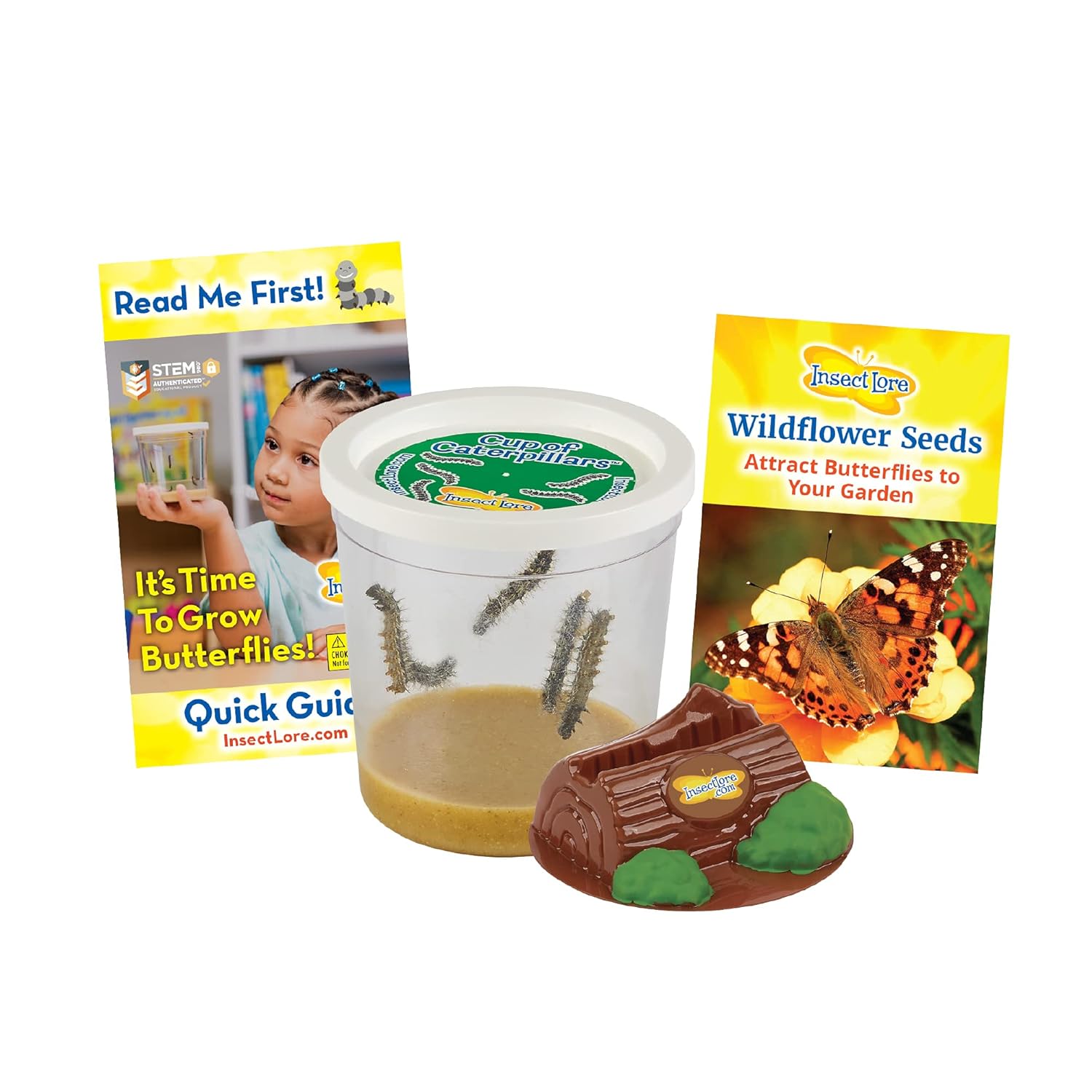Last Updated on December 9, 2022 by Griselda M.
Brown or What does a black woolly worm mean? Asked one of the gardeners. It is a weather reader and forecaster without the need for instruments.
The woolly worm or the Woolly caterpillar forecasts the coming winter weather. People in Midwest, New England, and the Southern United States have been relying on the services of the woolly worm to forecast the weather.
This worm has a different name depending on where you come from. Some call it the woolly worm, woolly caterpillar, woolly bear, fuzzy bear, or hedgehog caterpillar. This worm can curl up into a tight bristly ball and play dead when picked up or disturbed.
Whatever name you know it by, you can find this worm in autumn when it’s searching for a dark, sheltered spot to hibernate as larvae for the winter. This worm loves to eat dandelion, nettles, plantain, varieties of grasses, and weeds.
If their rusty band is wide, the winter will be mild; if darker, it will be severe.
Facts About The Black Woolly Worm
- The woolly worm is not a true worm. It’s a caterpillar, the larvae of the Isabella Tiger Moth (Pyrrharctia isabella).
- The Isabella is a beautiful winged creature with yellowish-orange, and cream-colored wings spotted with black.
- It is common in northern Mexico throughout the United States and across Canada.
- The Isabella tiger moth’s immature larva, known as the black-ended bear or the woolly bear, is one of the few caterpillars most people can identify.
- It has 13 distinct segments of rusty brown or black. It is black on both ends with rust-colored segments in the middle, but it can also be mostly black or rusty.

- Just because it is named Woolly bear doesn’t mean it feels like wool; rather, it has short, stiff bristles of hair.
- An all-black woolly caterpillar does not mean the weather forecast will be a severe endless winter, just that it’s a different species not used in forecasting. The same case happens for all-white woolly caterpillars.
- Just like caterpillars, woolly bears hatch during summer from eggs laid by a female moth.
- Mature woolly bears look for overwintering sites under bark or inside rocks or logs.
- This is why many are trying to crossroads and sidewalks in the fall just before winter begins.
- During spring, the woolly worm bears the spin fuzzy cocoons and transforms while inside them into full-grown moths.
Get to know What Do White Flies Look Like?
How Did The Black Woolly Worms Become Famous?
Dr. C. H. Curran, a curator of insects at the American Museum of Natural History in New York City, wanted to prove scientifically that the woolly worm could foretell the weather.
So he took his wife 40 miles North of the city to Bear Mountain State Park to look for woolly bear caterpillars.
He collected as many caterpillars as he could in a day and used them to forecast the coming winter weather through his reporter friend at The New York Herald Tribune.
Dr. Curran’s continued with his experiment for the next 8 years attempting to prove that woolly worms could be used to foretell the winter weather.
This resulted in the publicity of the woolly worms which were the most recognized caterpillars in North America – alongside the monarch caterpillar and tomato hornworm.
Insect Lore Cup of Caterpillars with Deluxe Chrysalis Station Live Habitat Kit Refill
Do Woolly Bear Caterpillars Foretell The Weather?
Dr. Curran’s average brown segment counts ranged from 5.3 to 5.6 out of the total 13 segments. This means that the total brown band took up more than 1/3 of the woolly bear.
According to this study, the corresponding winters were milder than average, as Dr. Curran had concluded and foretold.
Unfortunately, none of this report was taken seriously. Curran was under no scientific illusion, and he knew that his data samples were small. He and his friends decided to have fun with this exercise and escaped the city each year to see the foliage in fall and the woolly worms. They called themselves – The Original Society of the Friends of the Woolly Bear.
Thirty years later, after the last meeting of Curran’s society, the nature museum at Bear Mountain State Park resurrected the woolly bear brown-segment counts and winter forecasts. The annual counts have continued since.
For over forty years, Banner Elk, North Carolina, held an annual Woolly Worm Festival every October. It was highlighted by a caterpillar race.

Besides all these efforts, most scientists discounted the forecast of woolly bear predictions as a mere fairytale. Ferguson, one of the scientists, was quoted as “I’ve never taken the notion very seriously. You’d have to look at an awful lot of caterpillars in one place over a great many years to say there’s something to it.”
However, Mike Peters, an entomologist at the University of Massachusetts, disagreed with the scientists. He said there could be a link between winter severity and the brown band of a woolly bear caterpillar. In his own words, he said, “There’s evidence that the number of brown hairs has to do with the age of the caterpillar. In other words, how late is winter going into spring? The band does say something about a heavy winter or an early spring.”
This brought about the conclusion that these woolly worms can foretell the winter weather.
The wider the rusty brown sections, the milder the coming winter will be. The darker they are, the more severe the winter.
How To Read The Black Wooly Worms
Look for the woolly worms in the fall and watch them. There are two generations of these worms, some appearing in June and July and others in September. The September ones are the weather tellers.
Once you find these worms, start observing the colors of their brand and what they say about the winter weather.
If the rusty band is wide, the winter will be mid, but it will be more severe if it’s dark.
Are Black Worms Bad?
We have often been asked, are black worms bad? There is no direct answer to this question as these woolly crawlers can be both good and bad, depending on their environment. Although they can be beneficial to your aquarium, there are times when these worms have leeches that creep around with them.
Therefore, you must rinse them with tap water from time to time to avoid aquarium contamination and disease. The safest way to do this is by using a strainer.
In most cases, these parasites are typically harmless but removing them is recommended, especially if they invade your garden plants. The reason we suggest removing them from your garden is that they have a knack for chewing on the leaves and vines which will ultimately flaw your plants. But keep in mind that for an aquarium, black worms are not bad because they have beneficial nutrients that fish, toads, and other aquatic animals thrive off.
So, as you can see, these woolly worms can be good in some instances and not so good in others.
Are Black Worms Good for Plants?
So, are black worms good for plants you ask? The answer is no, black worms are not good for plants. This is because they can cause extensive damage to vines that can lead to the deterioration of the plant.
These worms are not harmful when they reach their full growth potential; however, while they’re still creeping around, they can be quite destructive. If you have a thriving garden that includes pastures, weeds, and grass, then you are sure to attract these little creepers who continuously chew on the vines and leaves.
Some of these creatures also sever undergrown plants at their base, which causes most of the vines to fall off. Climbing black worms on the other hand reach the plant leaves and feast on them, which causes holes. Not only does their habitual chewing flaw the look of your plant, but it also deteriorates your plant’s health.
Therefore, you must take the time to remove them by using effective natural strategies to get rid of fuzzy worms.
How Do You Get Rid of Fuzzy Worms?
If you want to know how you get rid of fuzzy worms, then we have the answers for you! Seeing that gardening is a common practice amongst many, the invasive pests that come along with it to hinder the growth of your plants can sometimes be quite annoying. Getting rid of fuzzy worms should be a priority, especially if they’re a threat to your thriving garden plants.
A few natural practices to rid the problem would include getting rid of the caterpillar’s nest by removing it, using naturally occurring soil bacteria that work as an extermination solution, or you can try an effective homemade caterpillar deterrent which includes a combination of a liter of warm water, a teaspoon of dish soap, and a tablespoon of molasses that can be used as a spray on your plants.
Alternatively, you could go with a garlic solution that includes a liter of water, 3-4 crushed garlic cloves, a tablespoon of vegetable oil, and a teaspoon of dish soap which works quite well.
Wooly Caterpillar Conclusion
Not that you know what a black woolly worm means; it’s best to try this exercise and see if you are like Dr. Curran.
Please note that every year, the woolly worms look different, and it depends on their region. So if you come across a local woolly worm, observe the colors of the bands and what they foretell about your winter weather.
Caroline is a gardener who loves to get down to the nitty–gritty of gardening. She proudly proclaims herself as a ‘dirt worshipper‘ and can often be found deep in the garden, covered in soil and singing to her plants. As a self–proclaimed ‘plant whisperer‘, Caroline believes that plants need love and attention just like any other living thing, and she loves to give them both. When she‘s not tending to her garden, you can often find her researching the latest gardening trends, or teaching others how to make their gardens thrive



